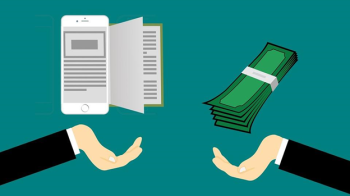
3112

For the student, the idea of writing an essay that will earn good grades with the tutor is probably the best. The way you articulate your thoughts in the article and how you relate them gives you confidence and assurance that the content of the article is worthy of a good grade.

Your teacher may decide to write an essay on a topic you may not know or have any idea about. The situation is worrisome, all because you don’t have the experience or the knowledge to improve your writing skills.
For example, consider B. a topic where you have to think about something you did on the first day of high school or college and write a narrative paragraph about it. The student is likely to have much more freedom to write about anything that interests him or her and captivates the reader, but may not know how to follow his or her ideas and write an appropriate traditional story.
While experienced students have already mastered and become familiar with at least one narrative paragraph prepared by the professor, new students find it difficult to lay the foundation for writing an essay.
Even for advanced students, some of the most important aspects of writing can be difficult on a case-by-case basis. The guidelines we provide on this platform provide much greater clarity on the standard and related challenges students face when constructing narrative paragraphs.
First, we’ll give you tips on how to quickly define narrative prose in an essay. The most striking aspect is the pronoun in the first person in the description of the experience. The use of the first person creates the impression that the author was involved in the events described, and such an account is personal. Sometimes someone writes about an illness they experienced as a group and uses the pronoun we.
What is a narrative paragraph and what is not?
Writers sometimes confuse writing a narrative paragraph in an essay with covering events. They can get mixed up, and students can fall into the trap of confusion and end up dropping their grades altogether. To determine what constitutes a narrative paragraph, the following characteristics should be identified:
- The description of an event on the basis of which the author builds his story.
- A thematic sentence that takes the reader into the same scenario as the narrator and encourages him/her to continue reading.
- The element must represent an order in the arrangement of ideas and events.
- The reader should be able to identify the components of the sensor throughout the chapter.
Prose that contains all of the above details is considered a narrative. Sometimes, however, an author can describe the events and the characters involved in each development in a way that is close to a story. In the end, this paragraph does not meet the essential requirements and falls under the narrative part of the report. In their research, students should look for specific features and avoid misinterpretations.
Frequently asked questions about writing a narrative paragraph
Students always ask questions about writing and formatting narrative paragraphs in essays. In the narrative paragraph, all you have to do is tell about your life experiences and anything that may have happened in your life. First, make sure you write down several points you want to include in the paragraph. Ideas should not only be supported by facts or reality, but also create a pleasant atmosphere so that the reader is drawn to the next point.
The paragraph should contain a topic sentence that introduces your content and encourages the reader to engage with your work. The article must also contain a substantive conclusion, which may take various forms depending on the author’s intent and the member’s point of view. For example, you may decide to end the story with an unexpected question.
Remember that you need to involve the readers in the storytelling process so that they can tell you the events you have described in your story immediately after reading. When searching for online materials for writing a narrative paragraph, students should consider whether the information guides and encourages them to be creative. We have ensured that the information we provide is reliable and will bring you one step closer to professional narrative prose.
Three ways to define a narrative paragraph
There are three ways to define a narrative paragraph. The definition is based on the organizational structure of the ideas presented in the paper. For example, a narrative essay about how your marriage was characterized by beauty and happiness. The events described are a reflection. The answer from you is the result of several persistent questions, how pleasant was it? The next way to define a narrative paragraph is when an author writes exclusively about events that occurred sequentially over a period of time.
The events are told in chronological order. For example, you could write about a study tour or write an autobiography. They must not omit details or describe events only in part. In a chronological approach, the author begins with the very first event and ends with the last.
You can also write in chronological order about a moment in the past that occurred during your story. This section describes a memory area relevant to your agenda. If necessary, a paragraph of feedback should be added.
How to write competent narrative paragraphs
Choosing the subject line can be quite tricky, especially if you want your email to stand out. But since you only have to talk about one event or experience in your life, it becomes a little easier if the focus is on the most exciting, scariest or saddest events. In the narrative approach, students are given the artistic freedom to create or even portray events that can be just as interesting as if they were actually happening.
Consider it fiction and bring out the essence of the story. When you stop at an important event, name a few things that you can relate to that event, keeping in mind that you are putting the player on the same level as yourself. These ideas will help you find the best topic for your paragraph. The subjects of the narrative paragraphs take the form of written things.
If you z. B. Write an article about how you learned to cook poutine, your topic should focus on cooking and could read as follows My first day as a poutine cook. The topic should be simple and short, so that the reader can orient themselves to what you are going to write. The tone of the story should be excited, sad or funny depending on the content and the target audience.
Why you should plan well in advance for writing.
Before writing this paragraph, it is imperative that the author take a moment to plan exactly what this paragraph will be. To complete the plan, please read the elements in the narrative section below from the author’s point of view. Please note that these are our guidelines and recommendations, but students are encouraged to explore different creative tactics for approaching the narrative paragraph. The most notable narrative paragraphs usually take up the writer’s time.
Decide whether you want to write a chronological sequence about a specific event for reflection, or a short life story. To create an appealing atmosphere in the mind of your audience, you should try to create an unusual kind of occasion that will attract the attention of the readers. We recommend that you take something that creates some form of conflict. It is human nature to admire and pursue stories that contain an element of disturbance or incongruity.
It is much easier to describe the course of events in such a scenario than to define a peaceful or happy event. Go from your version of the writer and make the most appealing one. Be careful not to create too many unrealistic versions of your experiences when telling a story about yourself.
Reflections on writing a narrative essay
If you’ve done your prep work, you can now decide how to start the narrative paragraph from scratch. Arm yourself with a few relevant admission questions. First and foremost, make sure you’ve refined your grammar, punctuation, and formatting techniques. Second, make sure you have a central theme or main idea that you want to convey to the reader. Your points should be general, but satisfying and exciting at the end of the paragraph.
The author should avoid discussing the most obvious topic and instead focus on the unique discovery that piques the reader’s interest. Most importantly, the plot of the paragraph should include the main and secondary characters, their character traits, and their involvement in your story. However, do not oversaturate the data set with an extremely large number of characters.
We also recommend that students practice writing narrative paragraphs so that they can follow the sequence of events and ideas before putting them on paper. A review helps the author stick to a chronological paragraph format and avoid discrepancies that could disrupt the flow of the story. According to the teacher’s instructions, the paragraph should have a minimum and maximum number of words to limit the author to the relevant information.
What information must be provided under?
An editor should not report too many unnecessary details. At the same time, the paragraph should not be too short, so that the story does not come across as sparse and inadequate. A minimum of three sequences is sufficient, in the upper range up to ten sequences. Avoid very long sentences that can make the reader lose interest halfway through. All essays or books that tell about an author’s experiences begin with a narrative introductory paragraph.
As a writer, you should briefly summarize what the topic of the story is and what will interest the reader. The paragraph should motivate the viewer with quotes or humorous axioms that captivate and keep his or her concentration. As mentioned earlier, your ideas should flow freely from your head from the first words of a sentence.
Once students begin writing, they should not care about the language or the formatting of the paragraphs any more than they care about the ideas they express. You can write as many paragraph texts as you can, and then correct grammar and punctuation errors after pasting your favorite draft.
The first sentence of the article is the most important. This is the most important teaser, as mentioned above, it gives the reader a first impression of the content of the paragraph. To familiarize you with the template and formatting, we have provided a topic sentence for the sample paragraphs below.
Trust our service
Don’t forget to end the article with a short sentence that should also encourage the reader to continue with other sentences, write an essay or try to write more articles. The closing sentence should summarize in a few words your opinion of the material as a whole.
The next time your teacher gives you an assignment in the form of a narrative paragraph, refer to this article and increase your chances of improving your grades. You can also always email or call us if you have any questions about the story. We will respond to your requests as soon as possible.
Share this story:
frequently asked questions
How do you use a story in an essay?
When you write a narrative essay, you are telling a story. Narrative essays are told from a particular perspective, often that of the author, so there are sensations and specific and often sensory details that draw the reader into the elements and unfolding of the story. Verbs are descriptive and precise.
How do I start a narrative paragraph?
Languages
What is the best way to write a narrative essay?
How to write a narrative essay: General Guidelines – PapersOwl.com







